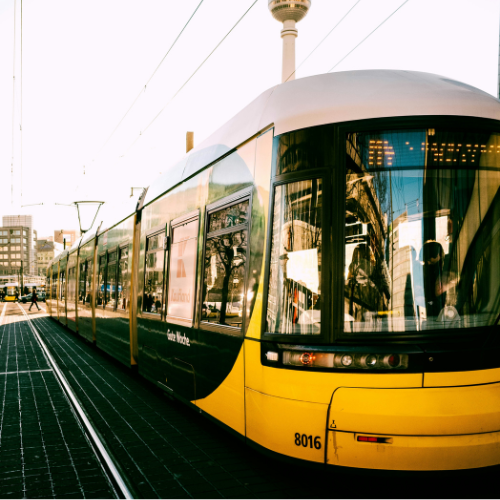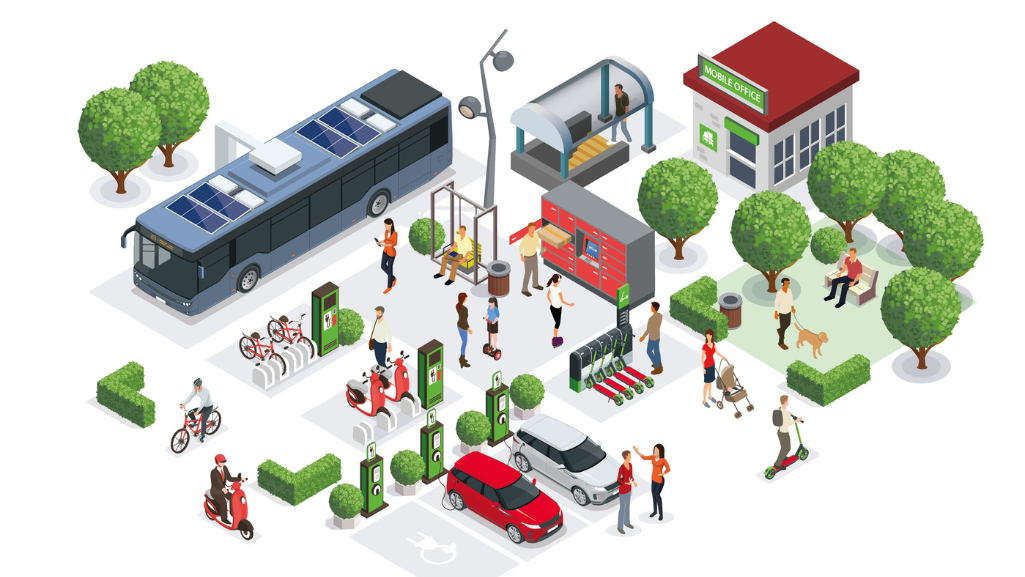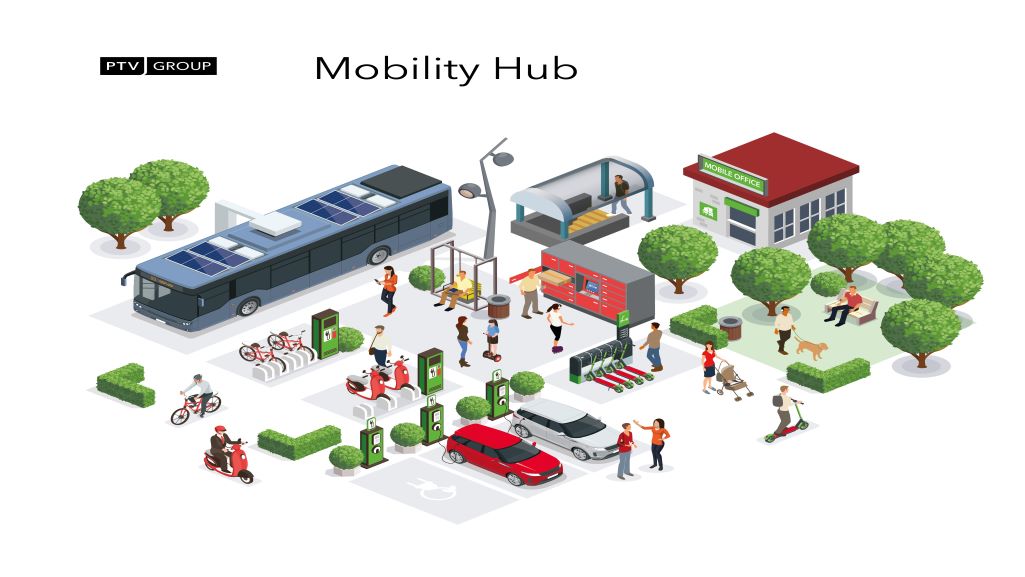In cities today, transportation is more than just getting from one place to another. Traveling should be as easy, efficient, and environmentally friendly as possible. Mobility hubs can play a decisive role here.
These multimodal stations are transforming cities worldwide. They are providing a cohesive network that integrates various forms of transport, offering numerous advantages, and supporting sustainable urban mobility.
What is a mobility hub?
Mobility hubs are strategic locations that bring together public, shared and active modes of transport. This allows for smooth transitions from one form of transport to another. These multi modal hubs typically include facilities for:
- Public Transit: Bus services, trams, and trains.
- Cycling: Bike-sharing services and secure bicycle parking.
- Micro-mobility: E-scooters and electric bikes.
- Car-Sharing: Shared car services and ride-hailing zones.
- Pedestrian Pathways: Well-designed walkways and a pedestrian-friendly street design that encourage walking.
By concentrating these modes in one place, mobility hubs simplify the transit experience. They are making it more convenient for users to switch between different transportation methods. The report “Mobility hubs of the future” provides a detailed definition of mobility hubs.
Mobility hub vs transportation hub

What is a transportation hub? Is there a difference between mobility hubs, you might ask? Transit hubs facilitate the transfer of passengers from one mode of transport to another. Train stations are typical examples, where passengers can switch from local trains to regional or national rail services.
Mobility hubs are a more comprehensive idea than just connecting transportation modes, focusing on integration and holistic approach. They design to create a seamless, user-friendly, and sustainable urban mobility experience.
Shared mobility hubs aim to provide an integrated experience across multiple transportation modes, including micro-mobility and active transportation. This means that the plan includes and connects cycle paths and sidewalks for pedestrians and even green space. Their focus is on the convenience, comfort, and accessibility for users. Mobility hubs provide comprehensive services like real-time information, secure bike storage, charging stations for electric vehicles, and community facilities.
What are advantages of Mobility Hubs?
Improved Accessibility
Mobility hubs enhance the accessibility of urban transportation. By integrating various transit options in one location, they provide a one-stop solution for commuters. This not only saves time but also reduces the hassle associated with using multiple transport modes.
For instance, a commuter can switch from a train to an e-scooter at the same hub. This allows them to easily complete the final part of their trip.
Reduced Traffic Congestion
By encouraging the use of public and shared transportation, mobility hubs can significantly reduce traffic congestion. When commuters have easy access to reliable and efficient public transit options, the dependence on private cars decreases. This leads to fewer vehicles on the road, reducing traffic jams and travel time for everyone.

Environmental Benefits
One of the most significant advantages of mobility hubs is their positive impact on the environment. By promoting the use of public transit, cycling, and electric vehicles, these hubs help to lower greenhouse gas emissions. By making these modes easily accessible, they encourage their adoption over more polluting alternatives
How are mobility hubs supporting sustainable transport?

Promotion of Public Transit
Public transit is a cornerstone of sustainable urban mobility. Mobility hubs make public transit more appealing by providing convenient connections and enhancing the overall user experience. When public transit is more accessible and efficient, more people are likely to use it. This leads to a reduction in the carbon footprint of urban travel.
Encouraging Active Transportation
By improving facilities for walking and cycling, mobility hubs promote active transportation. This not only reduces emissions but also has health benefits for the urban population.
Smart Technology Integration
Many mobility hubs leverage smart technology to enhance their functionality and sustainability. Using sustainable transportation options is easier with features like real-time transit updates, digital payments, and integrated mobility apps. Additionally, smart energy management systems can optimize the use of renewable energy sources within the hub, further reducing its environmental impact.
Cities with Mobility Hubs
Several European cities are leading the way in mobility hubs. Examples are cities like Vienna, Austria; Hamburg and Bremen, Germany; Amsterdam and Utrecht, Netherlands; Copenhagen, Denmark; and Barcelona, Spain.
While not as common as in Europe, there are still some North American cities that are developing mobility hubs. Some examples include San Francisco and Los Angeles in California, and Montreal, Canada. These hubs tend to focus on integrating public transportation with bike-sharing, car-sharing, and ride-hailing

Building Mobility Hubs
Creating easy-to-use mobility stations that improve urban transportation is a challenging task. Success crucially depends on the design and location, but one must also consider many other factors. Modeling and simulation play an important role in the planning and implementation of mobility hubs. They enable urban and traffic planners to make data-driven decisions and optimize design and operations.
Knowing future demand is important to ensure the mobility hub can handle the number of users. Tools like PTV Visum and PTV Vissim help to understand current travel patterns and identify high-demand areas for different modes of transportation. They also help to predict future demand based on population growth, economic development, and changes in travel behavior.
Digital tools optimize the design and ensure seamless integration of all transport modes. Mobility as a Service (MaaS) is an important concept here. Simulating the people within the hub, helps to identify potential bottlenecks and areas for improvement. This is also important with regard to safety and risk management.
Modeling and simulation are essential for ensuring efficient day-to-day operations. They assess how the hub operates during busy and quiet times, including interactions between different types of transportation.
By leveraging these technologies, cities can build mobility hubs that are not only efficient and user-friendly but also sustainable. This contributes to the overall improvement of urban transportation systems.



